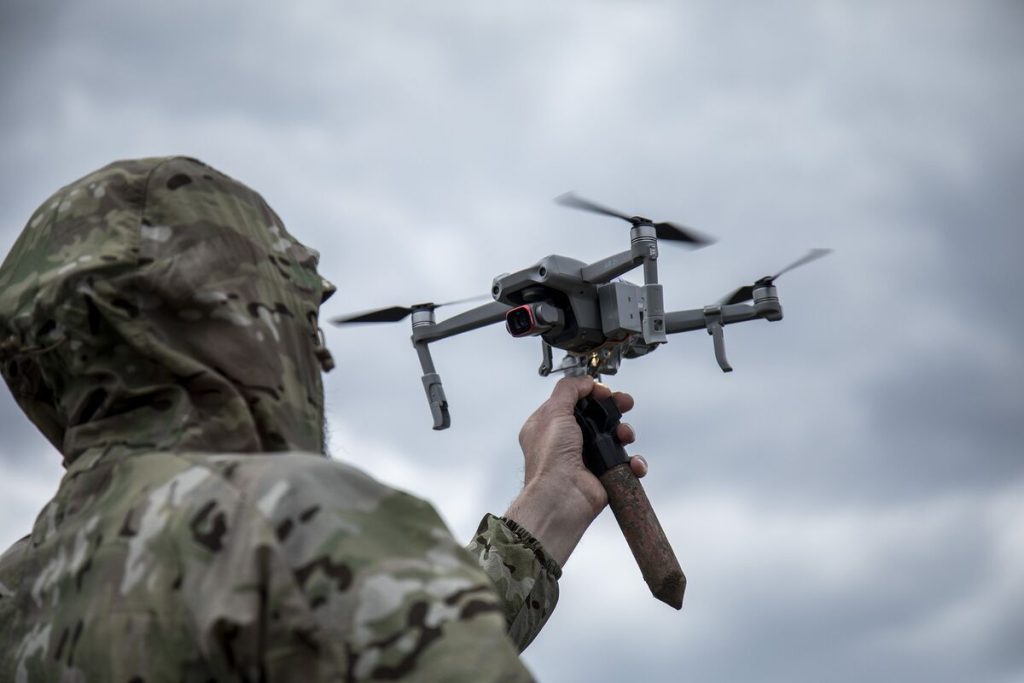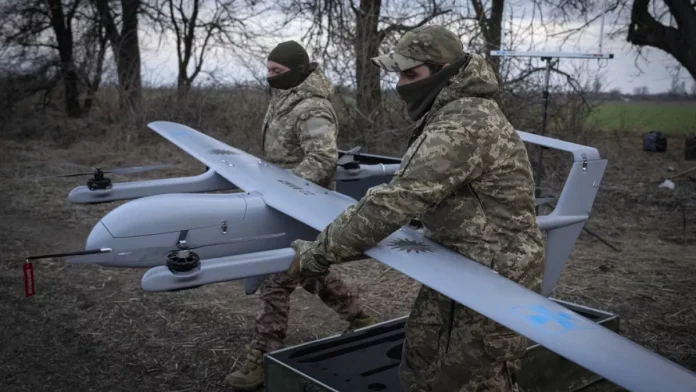Russia’s Drone Offensive Intensifies in Ukraine: Over 2,000 Attack Drones Launched in October Alone.
Russia’s relentless drones assault on Ukraine has reached staggering new levels, with Ukrainian military reports indicating that Kremlin forces deployed over 2,000 drones against both military and civilian targets last month. The October escalation marks one of the heaviest drone offensives of the war, underscoring the rising importance of drones in modern warfare and intensifying fears of sustained attacks on Ukraine’s infrastructure as winter approaches.
The Ukrainian General Staff reported that of the 2,023 launched by Russian forces in October, Ukrainian defenses managed to intercept 1,185. Another 738 reportedly went “locationally lost,” indicating an inability to complete their missions, possibly due to technical failures or Ukrainian countermeasures. Since the start of 2024 alone, the Russian military has launched a staggering total of 6,987 drones into Ukraine, primarily targeting critical infrastructure and densely populated areas, sparking significant concern over civilian safety.
“Enemy drones mostly targeted civilian and critical infrastructure,” the Ukrainian General Staff said in a statement. This assertion aligns with reports from Kyiv, which suffered at least 20 air raids in October, adding to the mounting toll on residents who live under a constant threat of airstrikes.

Throughout October, Russian drone strikes have battered several major Ukrainian cities, with capital Kyiv bearing a significant brunt of these attacks. The repetitive nature of the strikes on urban centers has strained Ukraine’s air defense systems, which are frequently activated to intercept incoming threats. Despite these defenses, the waves of attacks continue to wreak havoc, sometimes causing extensive damage to residential buildings and critical infrastructure.
On Friday, Ukrainian officials reported the destruction of 31 attacks and one missile during Russia’s latest overnight strike. The assault damaged residential buildings in multiple regions, including a fire station in the southern Odesa region, adding to the substantial structural toll seen across the nation. The impact of these strikes, particularly on essential facilities such as power and water infrastructure, has not only complicated daily life for civilians but also threatens Ukraine’s overall stability as the winter season looms.
Moscow, for its part, has maintained that it is not intentionally targeting civilians. Instead, Russian authorities claim that the attacks focus on “legitimate” military targets, asserting that power facilities qualify as military objectives when integrated into Ukraine’s national defense framework. Yet, the widespread impact on civilian areas paints a different picture, revealing the extensive and often indiscriminate reach of these strikes.
With winter fast approaching, Ukraine braces itself for further disruptions to its power grid. The Ukrainian energy system, which endured repeated blows from Russian missiles and drones earlier this year, remains fragile. According to officials, even minor disruptions could lead to significant outages, leaving large portions of the population without heat and electricity during the cold months.
The ongoing drone attacks compound the vulnerabilities in Ukraine’s power grid, creating an atmosphere of uncertainty as residents prepare for another season marked by intermittent power. “Every strike on our energy infrastructure is a strike on the well-being of our citizens. We are committed to rebuilding, but the sheer scale of damage has made it a daunting task,” said Oleksiy Chernyshov, CEO of Ukraine’s state energy firm Naftogaz.

The Ukrainian government has initiated various contingency plans to address potential energy shortages. Backup power generators and heating systems have been installed in critical locations, including hospitals, shelters, and schools, to help mitigate the anticipated impact of future strikes. International allies have also stepped in, providing financial aid and technical assistance to support Ukraine’s efforts to reinforce its power grid against further assault.
Russia’s growing reliance on drones in the conflict marks a significant shift in its military tactics. Initially, the conflict saw Russia employing missiles and heavy artillery, but over time, drones have emerged as a favored tool for their relatively low cost, precision, and ability to evade radar detection. In fact, many of the drones deployed by Russia are low-cost, commercially produced models, which can be modified to carry small payloads and are difficult to detect.
The effectiveness of these lies in their ability to reach heavily fortified areas without exposing human pilots to the risks associated with traditional aerial assaults. The smaller size and adaptability make them ideal for targeting specific installations or for conducting surveillance on Ukrainian positions. This shift reflects a broader trend seen across global conflicts, where drones are becoming essential tools in warfare due to their versatility and reduced operational costs.
Russia’s drone arsenal includes models capable of long-range missions, often operating from within Russian or occupied Ukrainian territory. The strategic use of these drones allows Russia to execute precise attacks on specific targets, whether military installations, energy infrastructure, or urban areas, with minimal financial cost compared to traditional weaponry.
In response to Russia’s drone onslaught, Ukraine has invested heavily in air defense systems, many of which are supplied by Western allies. The Ukrainian military has implemented a layered defense strategy, employing a combination of radar systems, anti-aircraft missiles, and electronic jamming to detect and intercept incoming drones. The recent interception rate of 1,185 out of 2,023 drones suggests that Ukraine’s defense systems are having an impact, though the sheer volume of attacks poses a continuing challenge.
The NATO-supported systems, including the advanced IRIS-T and Patriot missile batteries, have proven effective in targeting Russian drones. However, Ukraine’s military faces the ongoing challenge of needing more air defense resources than it currently has available, especially as the attacks continue to intensify. Despite the successful interceptions, the large number of “locationally lost” drones also highlights the risks posed by drones that evade detection and wreak havoc on Ukrainian soil.
The rise in Russian drone attacks has not gone unnoticed by the international community. European Union leaders have expressed grave concerns over the deliberate targeting of civilian infrastructure, and numerous countries have condemned Russia’s actions as clear violations of international humanitarian law. Meanwhile, NATO allies have continued to provide Ukraine with both military and humanitarian support, aiming to help the country withstand the sustained onslaught.

U.S. and European leaders have pledged further assistance to help Ukraine bolster its air defenses and strengthen its energy infrastructure. In recent weeks, the United States announced an additional $500 million aid package, specifically earmarked for supporting Ukraine’s air defense capabilities and repairing damaged infrastructure. The European Union has similarly pledged funds and technical expertise to assist Ukraine in restoring critical systems and preparing for the anticipated challenges of the winter months.
As Russia’s drone offensive intensifies, Ukraine finds itself in a critical phase of the conflict, facing unprecedented challenges in defending its territory and protecting its citizens. The rise in drone attacks underscores the evolving nature of the war and the importance of air defense in modern conflicts. For Ukraine, the drone strikes represent not only a threat to its military infrastructure but also to its civilian population, further intensifying the pressure on the nation as it braces for winter.
The international community’s continued support will be essential as Ukraine seeks to counter Russia’s drone offensive. While Ukraine’s air defense systems have shown resilience, the relentless barrage of drones represents a significant test of the nation’s resolve and resources. As the conflict enters another winter, the outcome of Ukraine’s efforts to defend against Russia’s drone strikes could shape the broader course of the war, highlighting the increasing role of drones in contemporary warfare and the ongoing struggle to protect civilian lives in times of conflict.




